Piazza Armerina
Ragusa is an excellent base from which to visit three very ancient sites – Piazza Armerina with its Roman villa, the ancient Greek city of Morgantina, and of course Siracusa (Syracuse).
From Ragusa we made a trip almost into the centre of Sicily to visit the town of Piazza Armerina. According to our guide book this town was settled by Lombard troops of the Norman King Roger II – according to other sources the Lombard settlers were brought in by King William II after the area was depopulated. Either way, the local population is supposedly therefore fairer in complexion than most Sicilians and speaks a distinct dialect. We didn’t see much evidence of this. I did see a bus full of fair-haired people speaking a distinct dialect but Lou suggested that they were more likely to be German tourists.
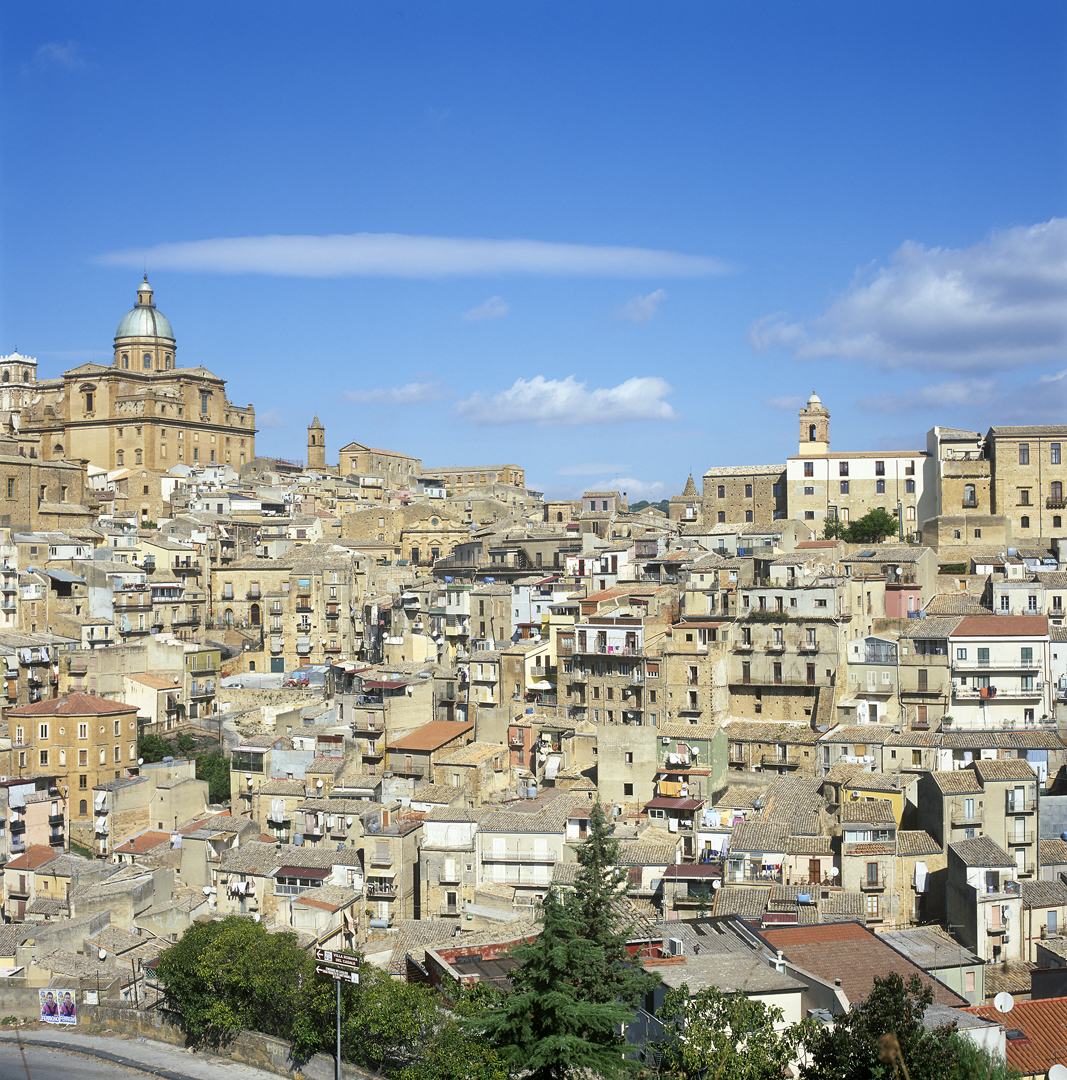
The interior of Sicily is the region of Latifundi – vast estates growing grain, worked in antiquity by slaves, then serfs, and later tenant farmers and landless labourers. Even though legally free, the farmers were kept in extreme poverty, which led to all sorts of social ills, not least the Mafia which by some accounts originated as a self-help system for those without any other means of redress against the power of the landowner and the state. Astonishingly, the Latifundia system operated continuously under the same name in Sicily and Calabria from Roman times until after the Second World War. When the estates were compulsorily acquired by the state for redistribution in the 1950s, the compensation paid to the owners was reportedly based – in a rare instance of official humour – on the productive value of the land nominated by those owners in their previous tax returns, which needless to say was not very much1.
The effect of centuries of this system on the cultivated and settled landscape is clear – unlike elsewhere in Italy where every hill has a village or small town on top and scattered farmsteads in between, in central Sicily the population is concentrated in larger villages and towns, from which they had to walk long distances to work in the fields. Between the towns the landscape, planted with grain, looks as sparsely-populated as Kansas or southern New South Wales, if hillier than either.
Anyway, the reason we were here was to visit the ruin of a Roman villa. Not just any villa, but a very substantial one which may at one stage in its existence have been a country retreat for the Emperor Maximian, or perhaps just a wealthy noble landowner, but parts of which date variously from the 2nd to the 4th Centuries AD. Towards the end of the Roman period the archaeology shows evidence of the troubled times with the thickening of the external walls for defensive purposes, and partial destruction during the period of the Vandal invasion in the 5th Century. After the Roman period it survived in increasing disrepair until it was covered by a mudslide in the early Middle Ages and not properly explored till the 1920s. Excavations are still in progress.
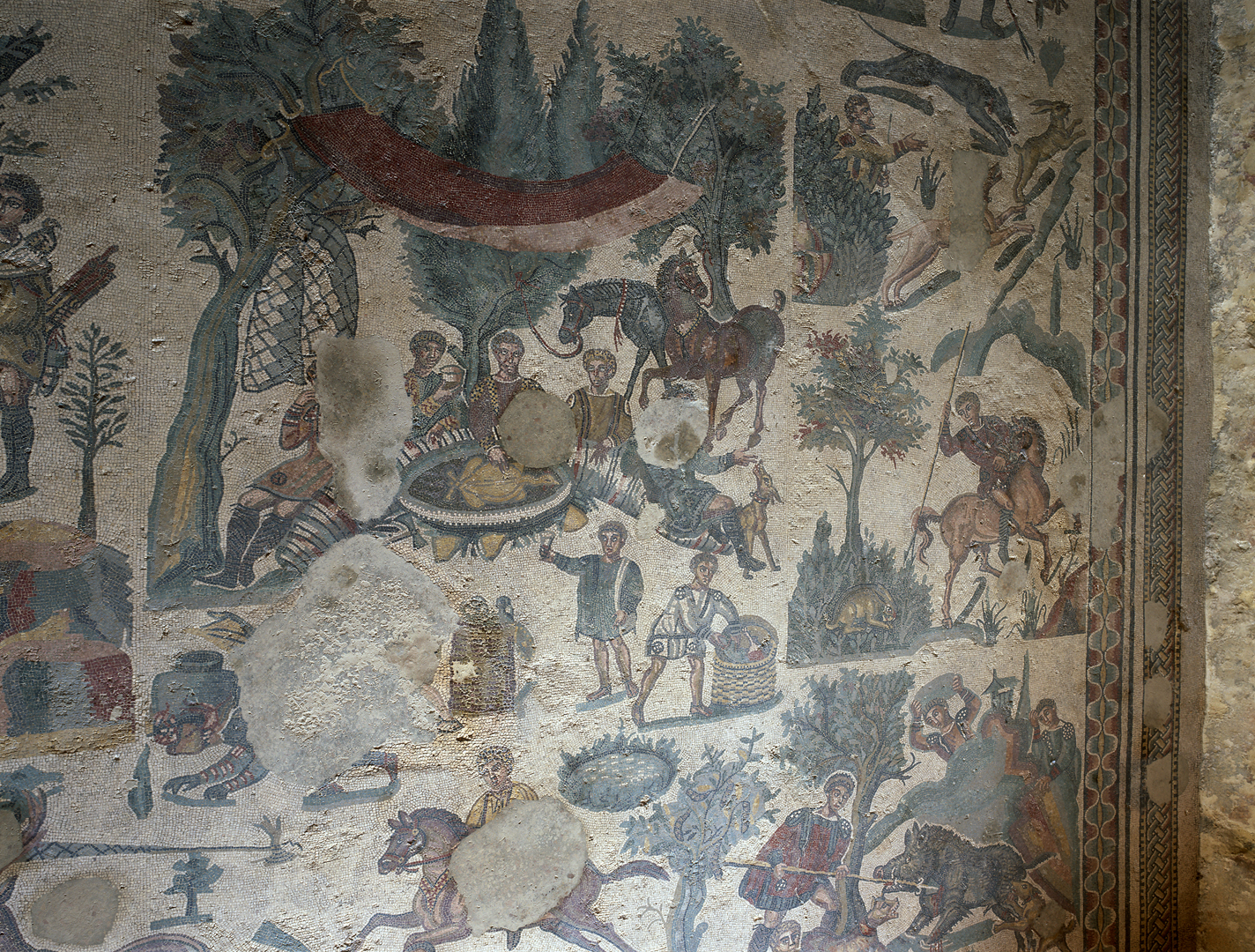
What makes it famous is the extraordinary mosaics. To the best of my knowledge there are none like these anywhere, not in Pompeii, not in Herculaneum, and it is not just the number of them, but the size and above all the workmanship. The closest thing we have seen is in Aquileia, right at the other end of the country. There are scenes of hunting, scenes of legionaries capturing exotic animals in Africa and shipping them to Rome, mythical scenes and – most famously – the soft-porn scenes of young ladies in bikinis taking part in various sports including what looks like beach volleyball. Whoever lived out in the sticks here could clearly afford to bring skilled craftsmen and expensive materials from a long way away.
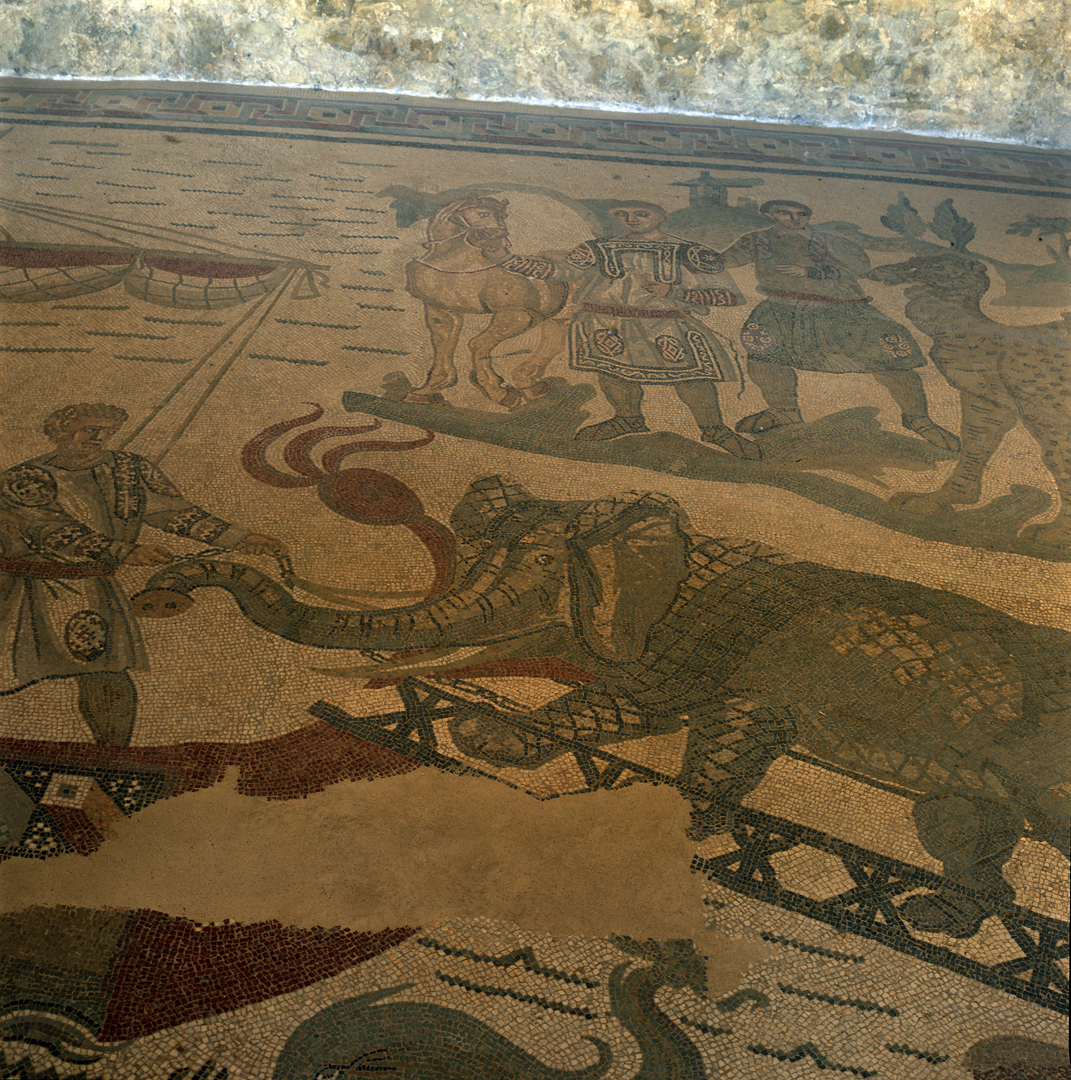
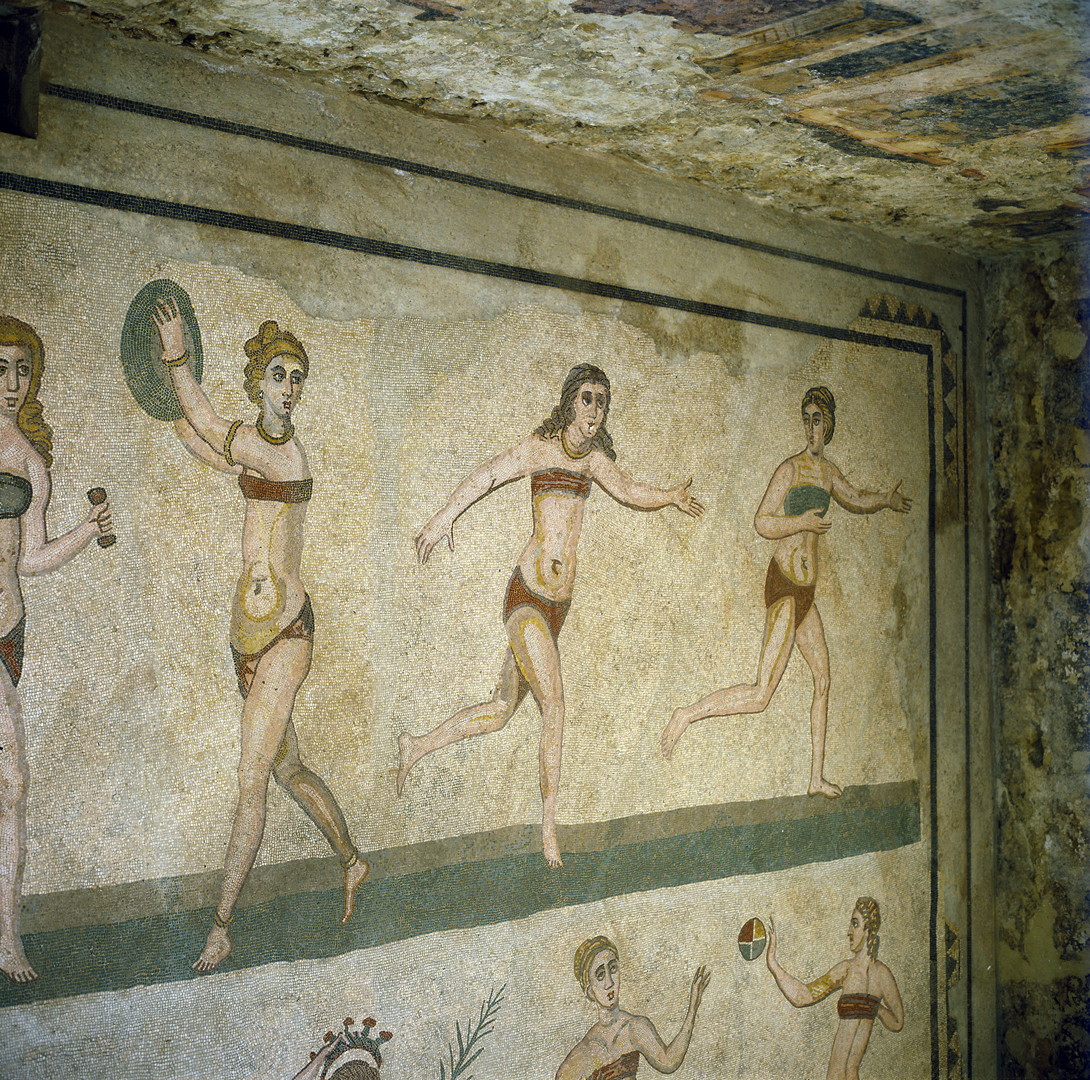
The villa is famous for the number of its tourists so to beat the crowds we had set out quite early and got there not long after opening time – so early were we that most of the tents selling souvenirs were not even open. It is an archaeological excavation in progress so there is no guarantee what will be open but most of it seemed to be. We got round the site while very few other people were around but as we left the tour buses were starting to roll up, filled with the descendants of Roger’s troops, or perhaps Germans.
Morgantina
From Piazza Armerina we went to another ancient site – much older and far less crowded. It is a Greek city called Morgantina, dating from the 5th Century BC, but formerly a settlement of the pre-Greek Sicel people after whom Sicily is named. There’s not a lot left, but enough to work out where the centre of town was, and where the citizens met in the agora. The theatre is fairly well-preserved, and the bits of the theatre that weren’t preserved have been restored.
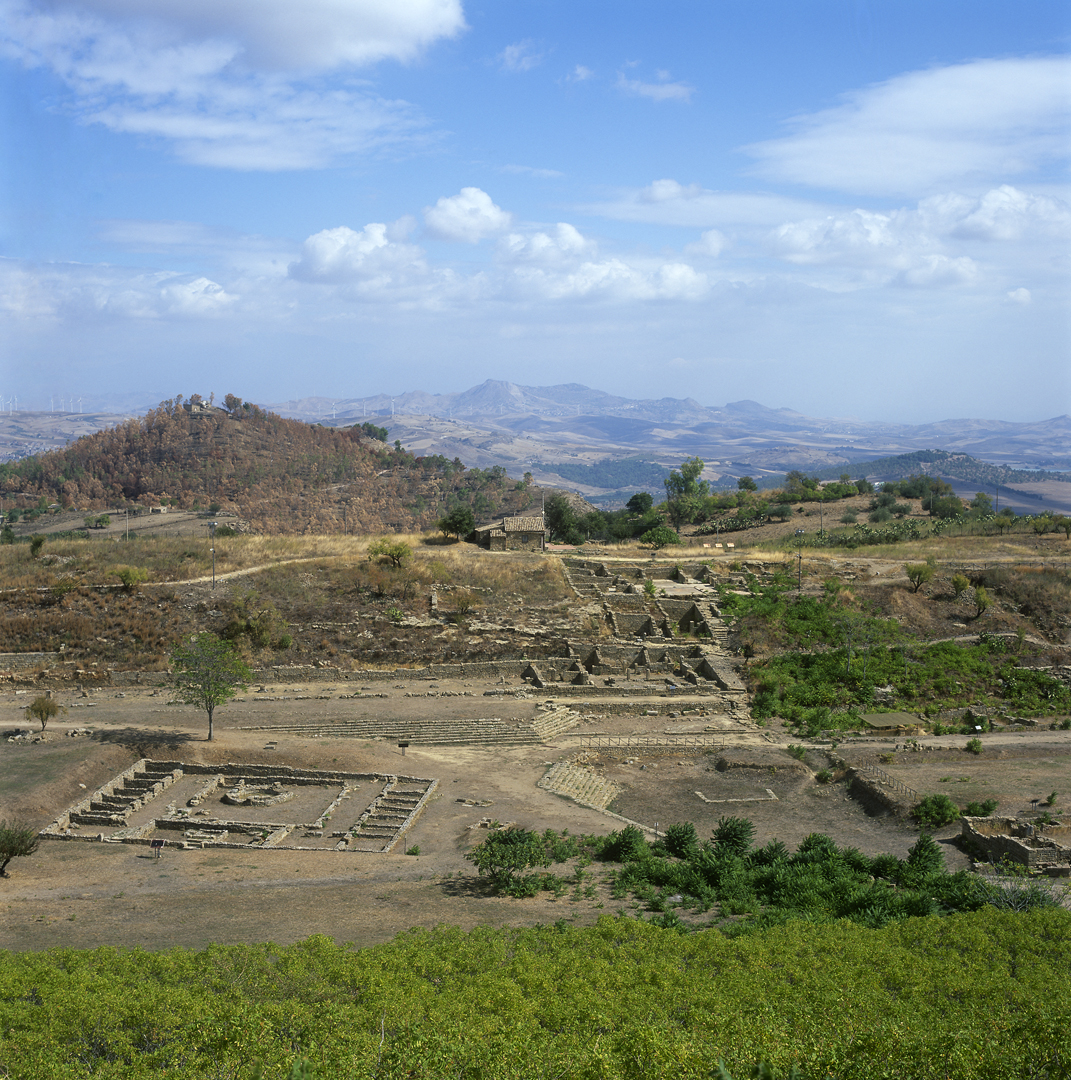
In the many wars during the period of Greek settlement Morgantina seems to have generally sided with, or been a vassal-state of, Syracuse (see below). In the Punic Wars Morgantina, like Syracuse, took the side of Carthage against Rome. It seems to have been abandoned by the First or Second Century AD. It was also the source of a grape variety from which a highly-regarded wine was made. It would be nice to think that some of modern Sicily’s unusual grape varieties were its descendants.
Unlike the Roman villa at Piazza Armerina, which is in a small valley, Morgantina is on a mountain top. Presumably, given their proclivities for fighting each other, the Greeks chose such spots for defensibility, but it must be admitted that it gave them some tremendous views.
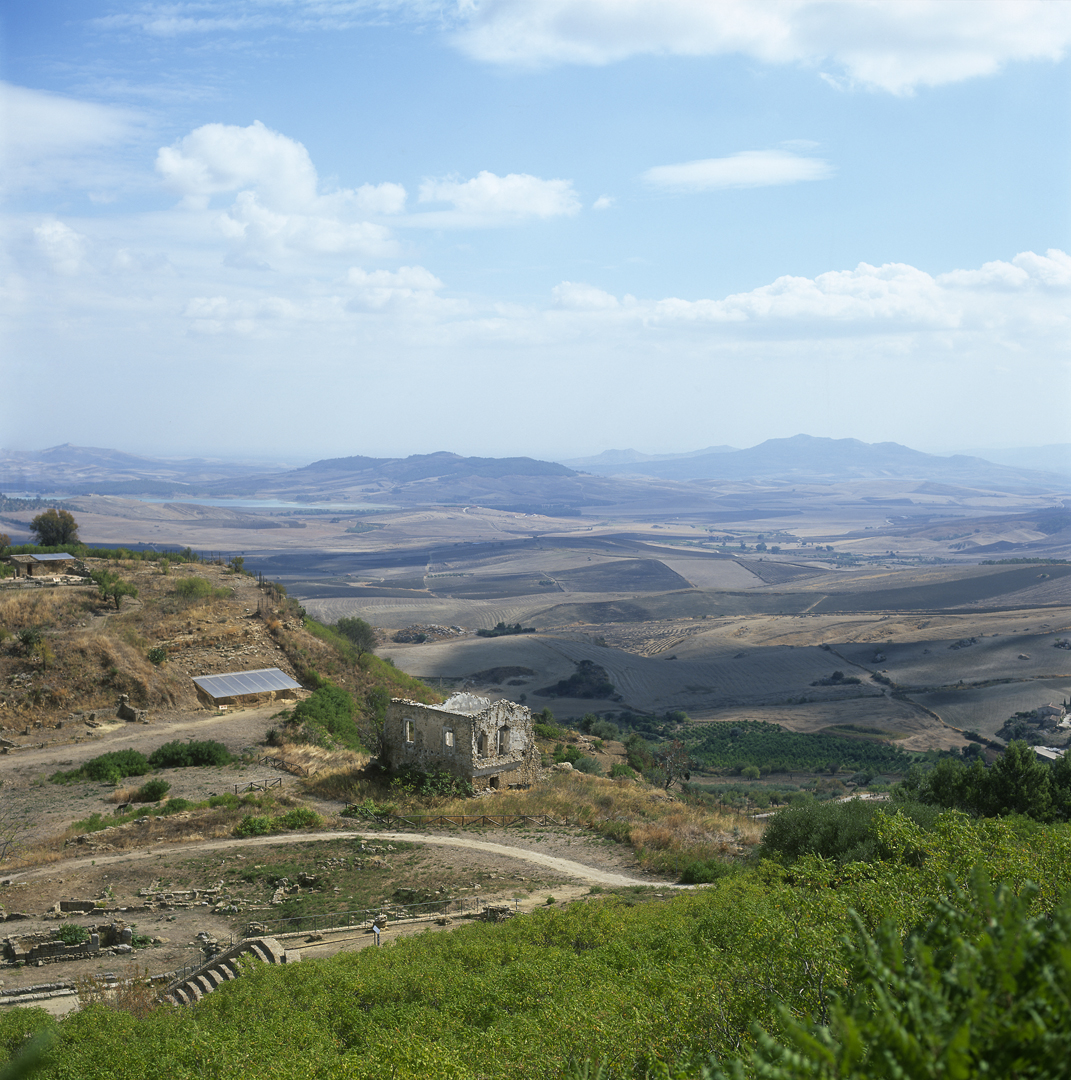
From Morgantina we headed to the nearby town of Aidone (on another mountain top) in search of lunch. Here we managed to demonstrate that it is actually possible to find a bad meal in Sicily. We followed signs to a restaurant which turned out to be in a small hotel. We stuck our heads in, didn’t see anyone and headed out again, when an old lady appeared, asking if we wanted to eat, smiling and beckoning. By that stage it would have been rude to demur, so we accepted, which we then had plenty of opportunity to regret. I’ll spare you the details, but when the meal eventually appeared it had mostly come out of jars and the cost was €40, which was exorbitant by local standards for what we got. Needless to say we ate alone.
Siracusa
The following day was another long-distance effort, when we got up early and drove to Siracusa. Yes, this is the Syracuse of antiquity, for a few hundred years an independent Greek city-state, home to Archimedes and the focus of stubborn if ultimately unsuccessful resistance to Rome during the Punic Wars.
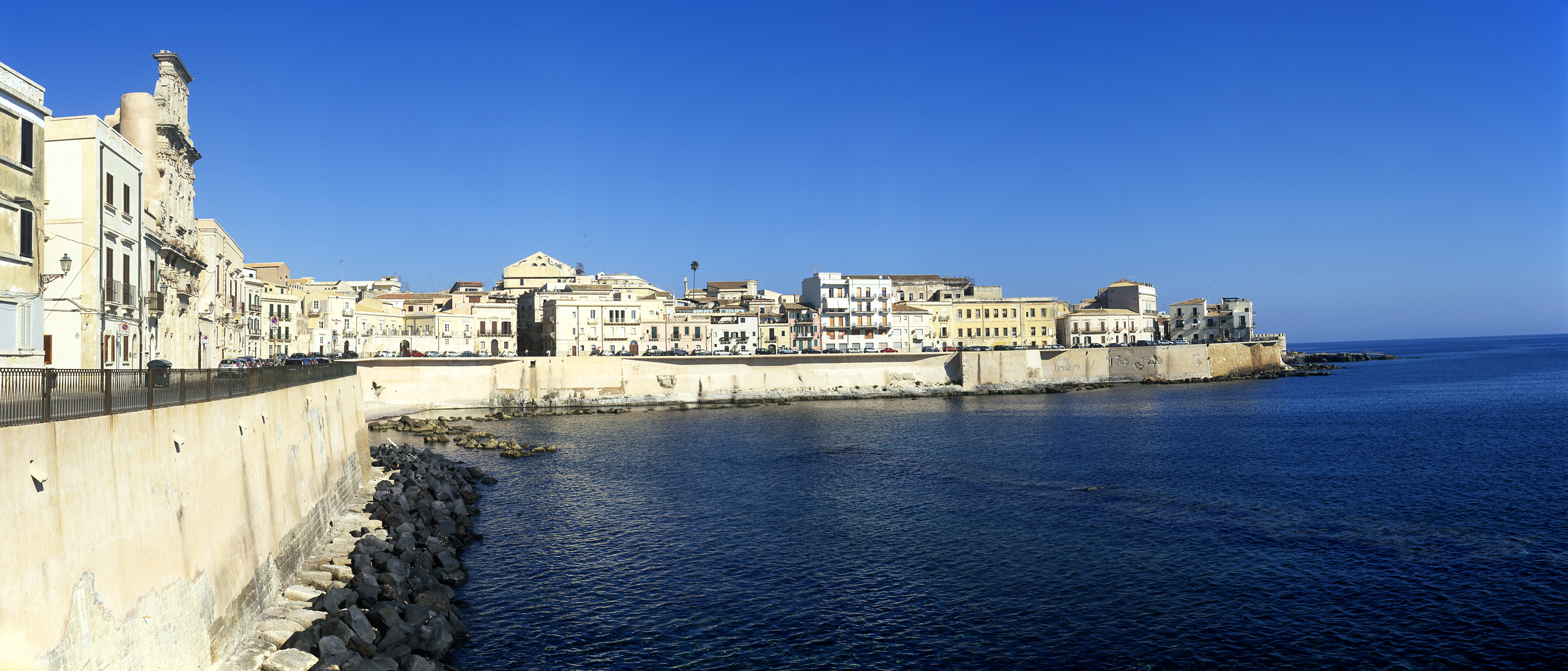
The old city of Syracuse was on the island of Ortigia in the harbour – easily defended and the site of a copiously-flowing freshwater spring which still flows into the harbour today. It is called the fountain of Arethusa and needless to say there is a mythological story to explain it. Like most nymphs, it would seem, Arethusa was beset by the unwanted attentions of another god or demigod. In this case it was a river god, and when Arethusa turned herself into a spring to get away from him, he turned himself into a river and his waters mingled with hers, thus ensuring he got his wicked way with her after all. In hindsight the turning-into-a-spring strategy was probably flawed.
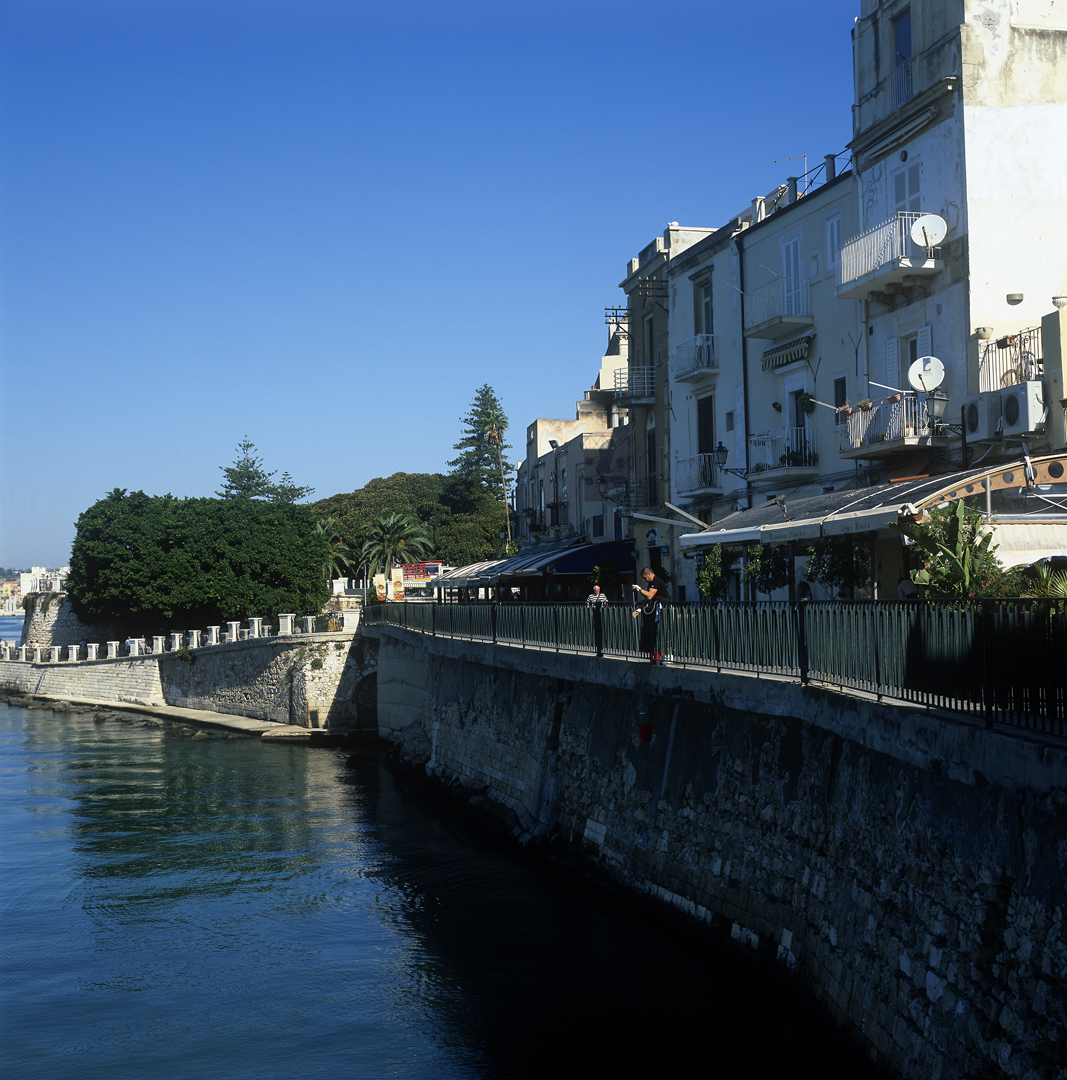
As a child, I read about Greek myths in Look and Learn magazine and illustrated encyclopaedias. To the extent that I thought about it at all I thought that the Greek myths took place in what we now think of as mainland Greece, Crete or the Aegean. But Sicily was then part of the Greek world and it seems that several mythological or heroic episodes were explicitly understood to have happened there. Persephone was kidnapped by Hades at a lake in central Sicily. The Cyclops, in particular Polyphemus who gave Odysseus such a hard time, lived on the east coast. Scylla and Charybdis (Odysseus again) were on either side of the strait of Messina. Perhaps Sicily had a place in the general Greek imagination a bit like the Wild West in the 19th Century – a real place, but far away enough to be exotic.
Back to the present. These days Siracusa is a pretty big town with a fair bit of industry on the outskirts but it has done well to protect the historic centre on the little island of Ortigia. The town was pretty badly bombed in 1943 but most of Ortigia survived. The Siracusan town authorities have done what the better-advised tourist towns in Italy have done: they have not only restricted traffic in the historic centre – easy enough – but they have built a large parking garage on the edge of Ortigia and run a free bus shuttle from it into the centre. According to the guide book the parking used to be free as well but in these tough times that couldn’t last. However to park there for a day will not cost you much.
Once in the centre of Ortigia we got our bearings and headed straight for the cathedral. In an Italian town or city the cathedral is almost always called the “duomo”, and there is almost always a Piazza Duomo in front of it and in that piazza there is almost always a Cafe Duomo. Lou has a theory that this will always be one of the better cafes in town, on the grounds that to have grabbed the name they will have had to be in existence for quite a long time. Anyway there is only one way to test this theory empirically so we had a coffee and a pastry each.
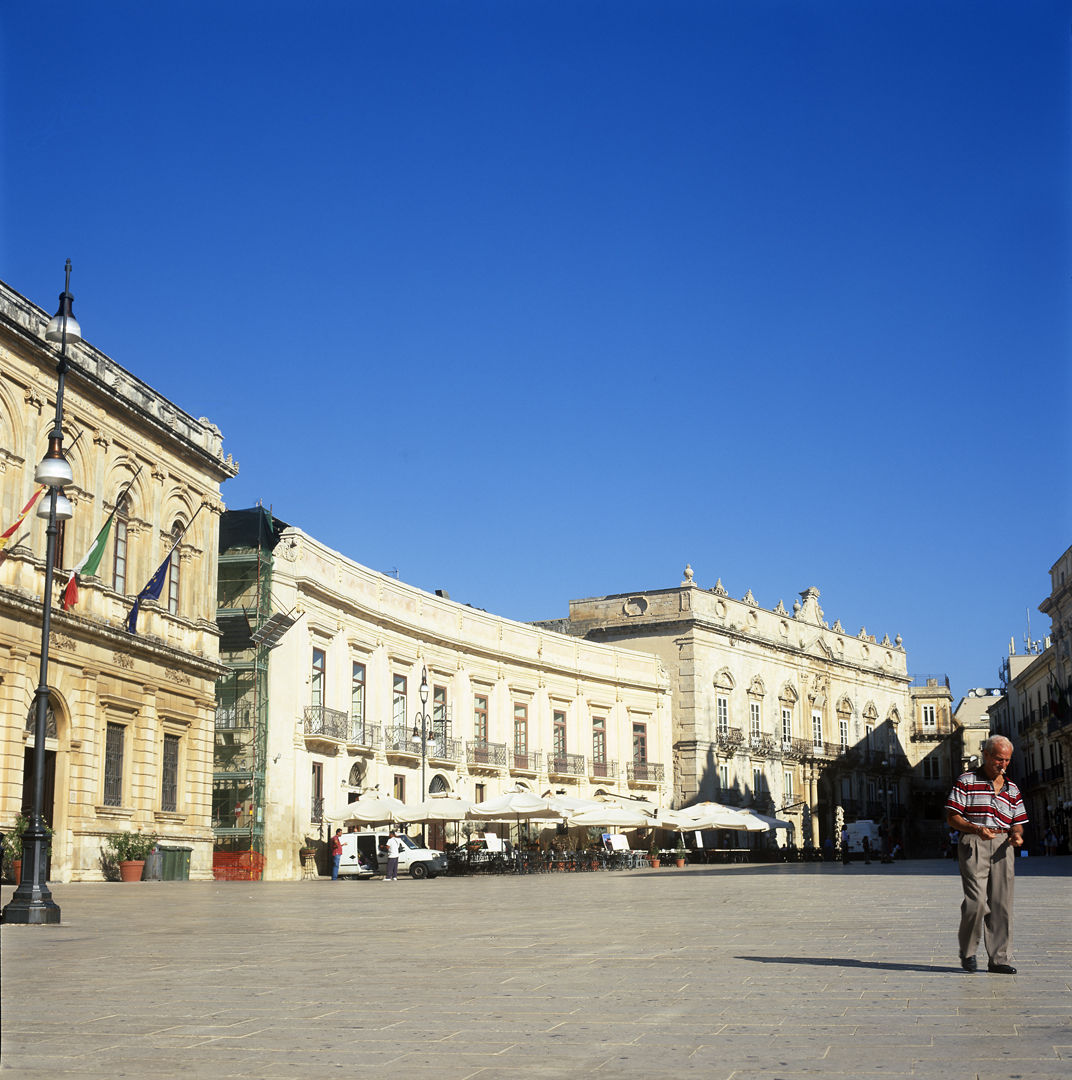
Thus fortified we headed into the duomo which is a quite extraordinary building. The façade facing the street is conventional baroque, but inside, or on the outer side wall, something much more complicated appears. Not only has there been a Greek temple, a Byzantine church, an Arab mosque and then a Catholic church on that spot since 480 BC or so, but elements of most of those are still present. In particular, the columns that supported the original temple of Athene are still incorporated into the walls. Also, as was the case with the duomo in Cefalù, some brave soul took the wise decision to strip off the rubbishy baroque accretions from the interior and as a result the church has regained much of its nobility. We thought it very good indeed.
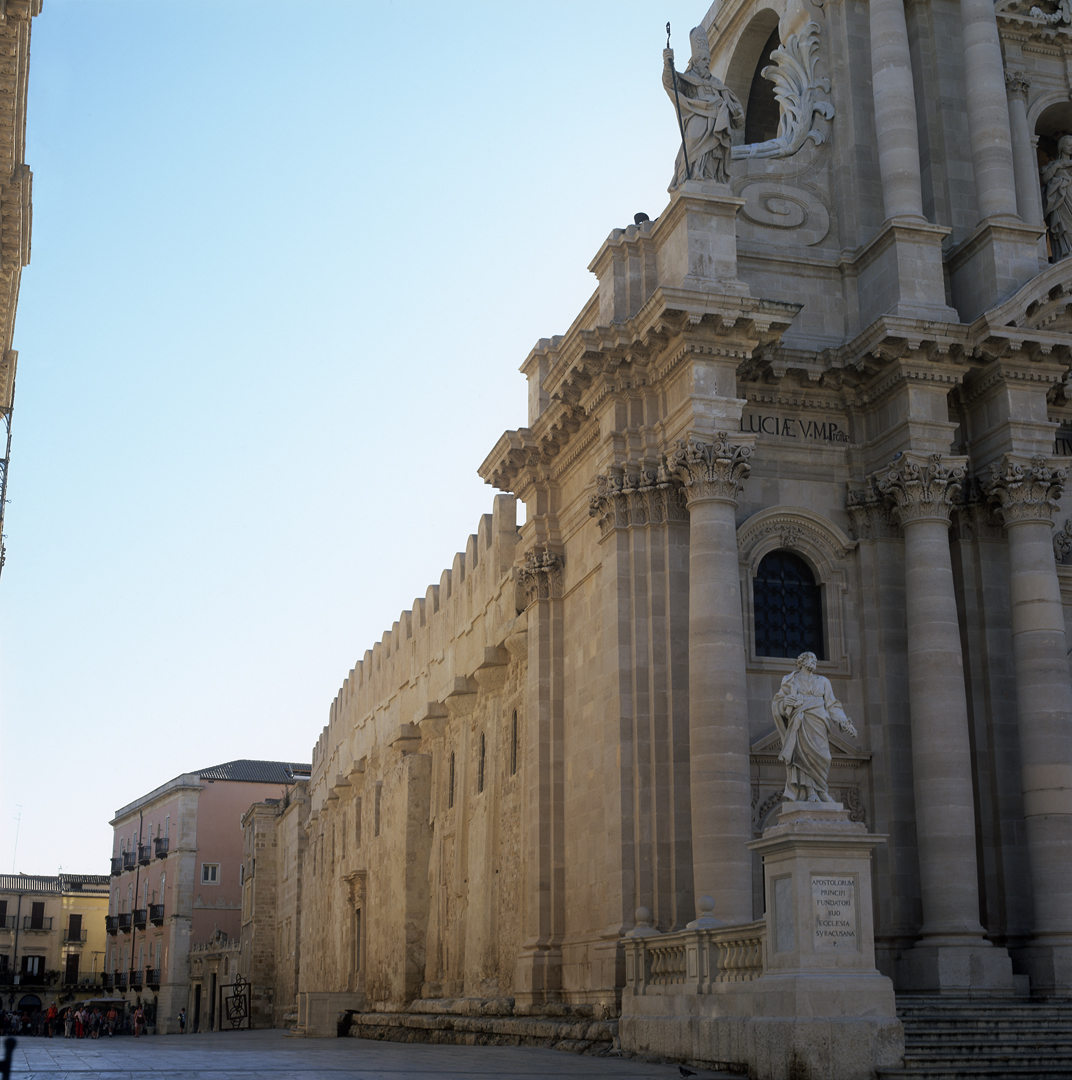
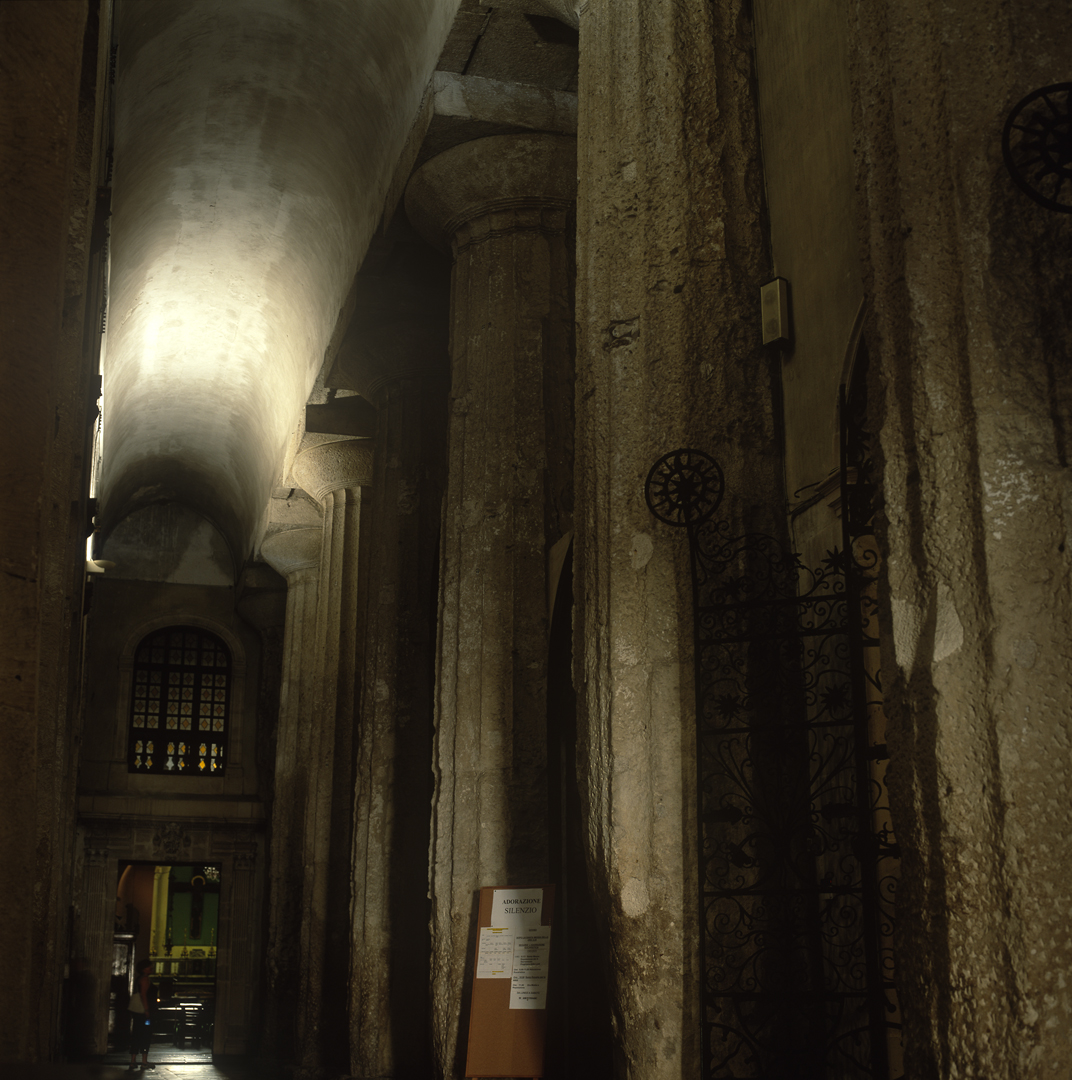
After the duomo the next church we wanted to see wasn’t open so we walked around the edge of Ortigia then cut back into the middle and went into the church of Santa Lucia. This is supposedly on the site of the martyrdom of said saint, but the main attraction for us was the altarpiece which is a large painting of “The Burial of Santa Lucia” by Caravaggio, done in atonement for one of his many run-ins with the authorities.
After spending some time there we visited another Sicilian cultural icon – a museum of puppetry. Sicily has a long history of puppet theatres which provided entertainment to people who had no other alternatives, and these theatres, amazingly, survived well into the 20th Century. As a result, when the inevitable revival came along, it wasn’t the resurrection of a culture that had completely died and which needed to be reconstructed from books, but the reinvigoration of something whose original exponents were still living.
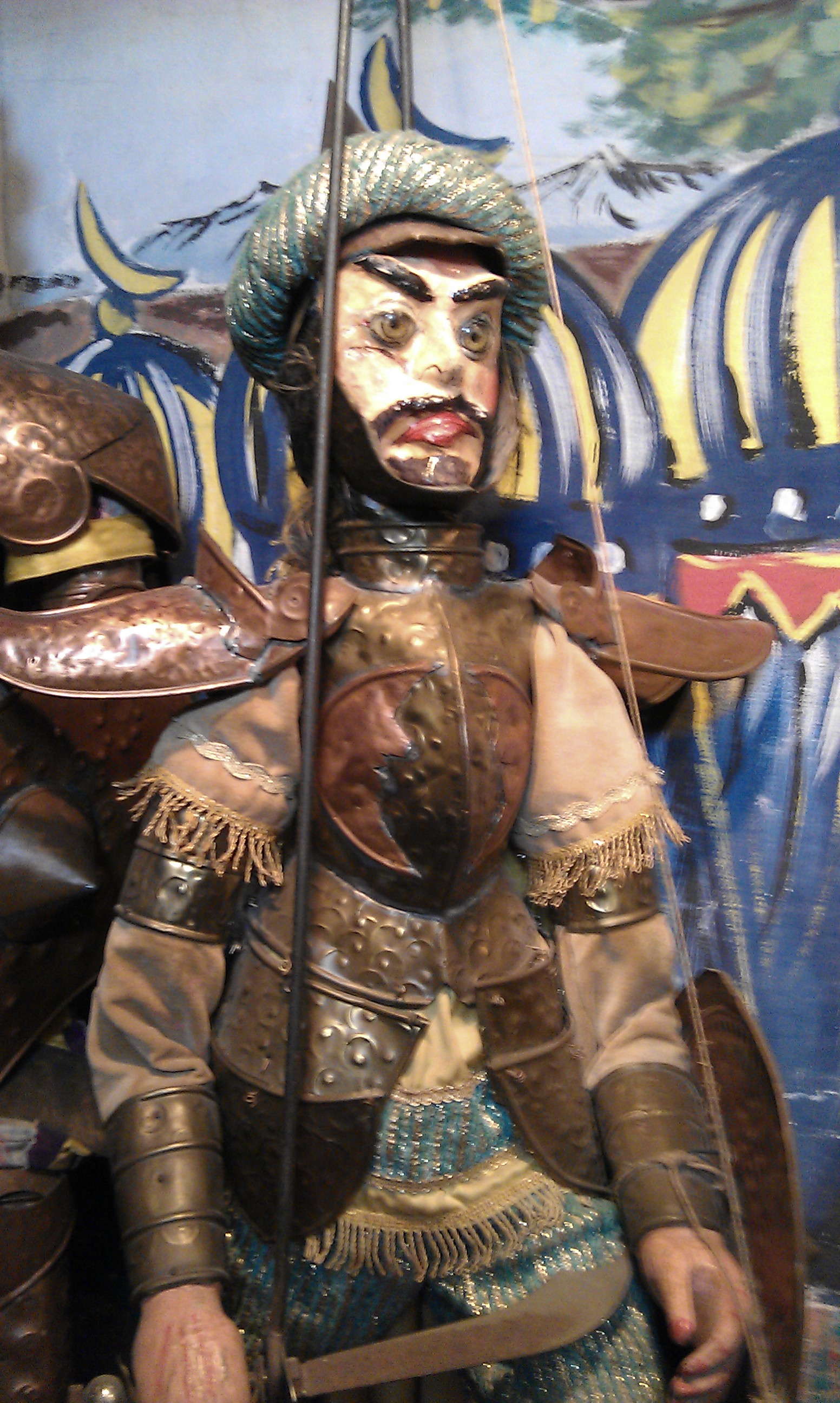
The fascinating thing about these puppet theatres is how formulaic but historic the stories are. They are a mixture of historical characters (the Norman Count Roger defeating the Saracens, for example) and stories from Ariosto’s “Orlando Furioso” which in turn is derived somewhat loosely from the Song of Roland. So there are lots of knights, Saracens, giants, dragons, beautiful maidens, beautiful maidens disguised as knights, and so on.

Many of the same scenes were portrayed on the sides of the traditional brightly painted donkey carts which alas have now largely been replaced by little “Ape” two-stroke three-wheel trucks (but whose owners occasionally show a similar flair for decoration, happily).
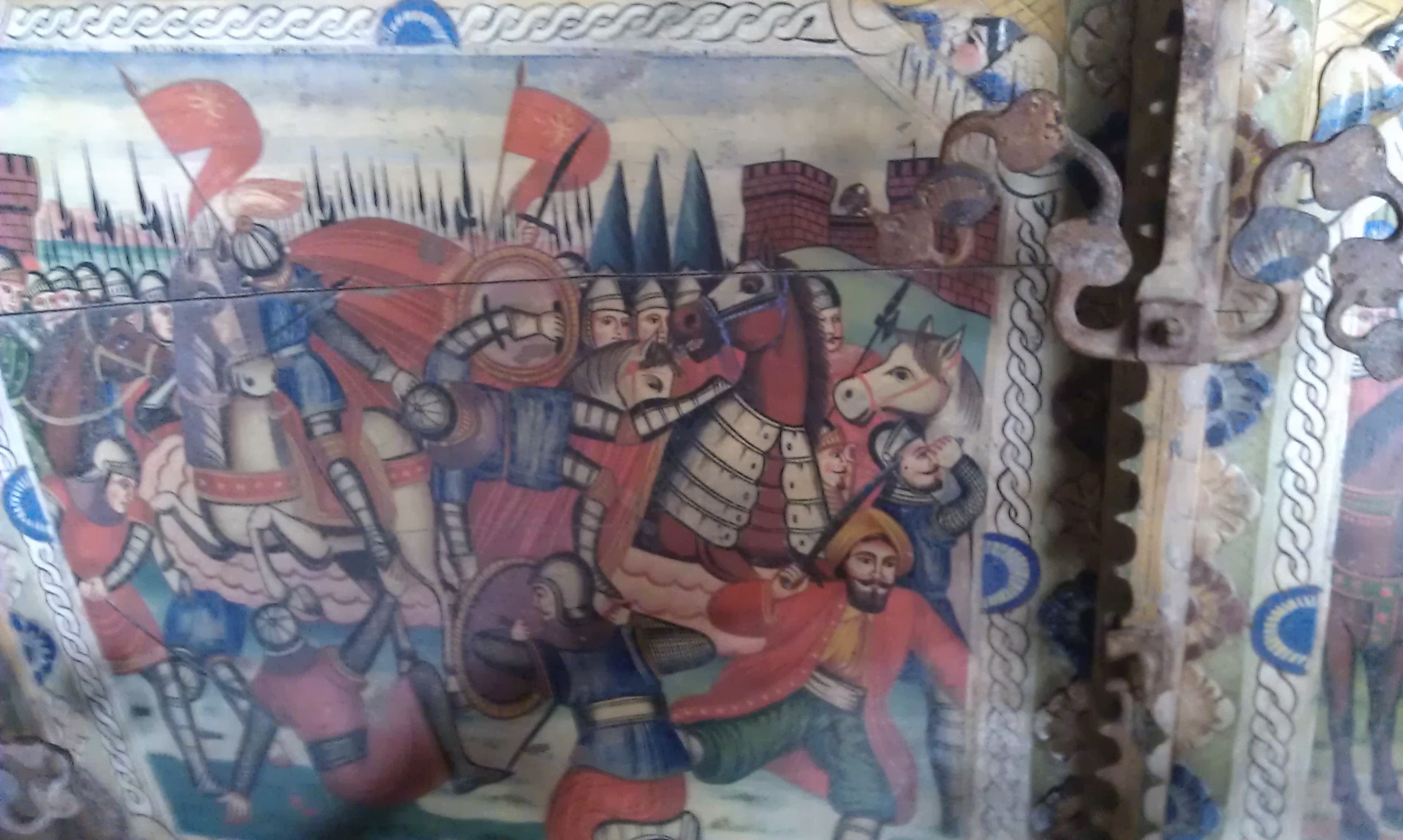

Note1: I can’t remember where I read this but if I manage to track down the reference I will update the post.

One Reply to “Piazza Armerina, Morgantina and Siracusa”